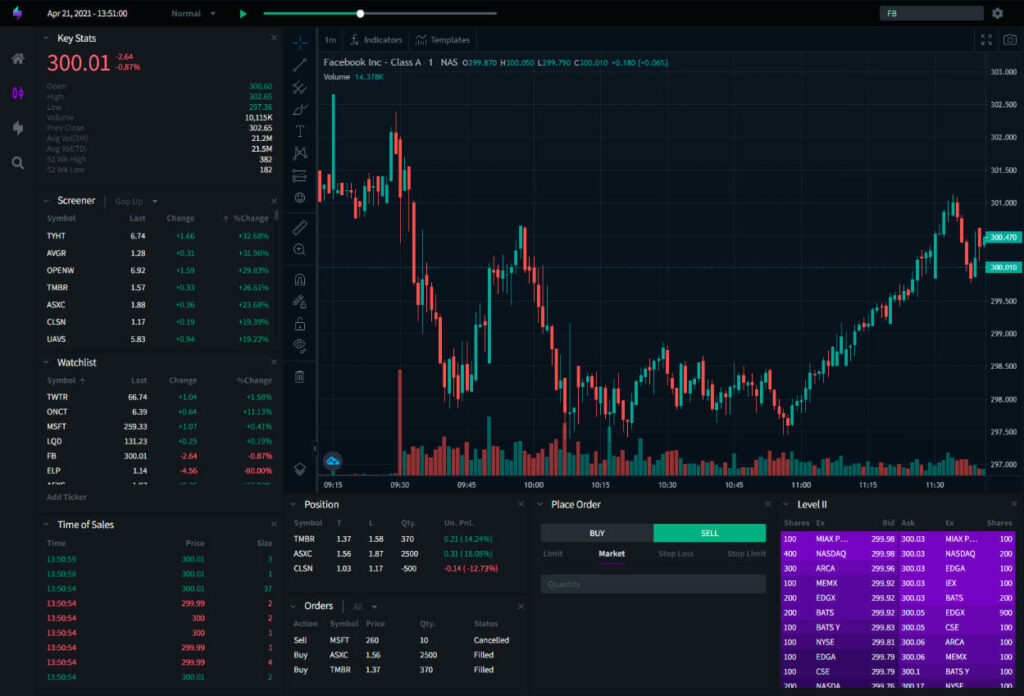In the exhilarating world of trading, day trading stands out as a high-octane endeavor filled with both opportunities and risks. Aspiring traders often seek a safe haven to hone their skills before risking real capital, and that’s where day trading simulators come into play.
These powerful tools provide a risk-free environment where users can practice strategies, analyze market trends, and cultivate their intuition without the looming threat of financial loss. But with a multitude of simulators available—varying in features, complexity, and user experience—how can one sift through the noise to discover the best options? This comprehensive guide will navigate you through the landscape of day trading simulators, highlighting the top tools that cater to traders of all levels.
Whether you’re a novice eager to learn the ropes or a seasoned trader looking to refine your skills, the right simulator could be your key to success in the fast-paced realm of day trading.
Benefits of Using Day Trading Simulators

Using day trading simulators presents a multitude of advantages for both novice traders and seasoned professionals alike. For beginners, these platforms offer a risk-free environment to learn the ropes; they can practice executing trades without the anxiety of losing real money.
This invaluable hands-on experience fosters confidence and helps traders develop their strategies over time. For experienced traders, simulators serve as an effective testing ground for new tactics or to refine existing ones without financial repercussions.
Moreover, many simulators provide analytics tools that allow users to track performance metrics and gain insights into their trading behavior. The bar replay free tool within these simulators adds another layer of utility, allowing users to replay past market conditions and analyze how different strategies would have performed. This immediate feedback loop not only enhances learning but also equips traders with the skills necessary to navigate the volatile markets effectively.
Ultimately, by simulating real-world trading scenarios, these tools empower users, transforming their approach to day trading and refining their decision-making processes.
Key Features to Look for in a Day Trading Simulator

When choosing a day trading simulator, several key features can significantly enhance your learning experience and prepare you for real market conditions. First and foremost, look for a platform that offers real-time market data and execution speeds comparable to actual trading environments—you want to feel the rush of the market without the financial risk.
Additionally, a range of customizable trading instruments, from stocks to options and futures, can provide the versatility needed to explore various strategies. User-friendly interfaces equipped with advanced charting tools and technical indicators are indispensable for honing your analytical skills.
Furthermore, educational resources, such as tutorials and community forums, can foster a sense of connection and support, helping you navigate the complexities of day trading. Finally, consider the availability of simulated capital—the more funds you can practice with, the more nuanced your approach will become, allowing you to test your strategies thoroughly before diving into live trades.
Common Mistakes to Avoid When Using Trading Simulators

When using trading simulations as a learning tool, several common mistakes can derail your progress and skew your perception of real market dynamics. One major pitfall is treating the simulator as a stress-free environment devoid of real consequences; this mindset can lead to reckless trading decisions that don’t reflect prudent risk management.
Additionally, many users fail to replicate real-world conditions—neglecting to account for slippage and fees that can drastically affect profitability. Another common misstep is over-optimizing strategies based solely on past data without considering the ever-evolving market landscape.
Remember, relying too heavily on the simulator might foster a false sense of security. Ultimately, the goal should be to bridge the gap between practice and reality, embracing the simulator as a tool for disciplined learning rather than a playground for unchecked ambition.
Conclusion
In conclusion, day trading simulators are an invaluable resource for both novice and experienced traders looking to refine their skills and strategies without the financial risks associated with real-time trading. By providing a realistic trading environment, these tools empower users to practice their techniques, analyze market dynamics, and develop a disciplined approach.
Among the various simulators available, the bar replay free tool stands out as an excellent option for those seeking to review past market movements and enhance their decision-making skills. Whether you aim to test new trading strategies or sharpen your existing ones, investing time in these simulators can set you on a path toward becoming a more proficient and confident trader.


